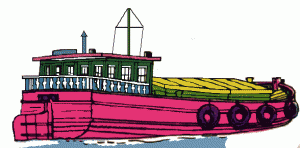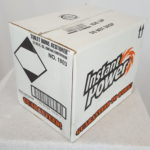A question June 16, 2020:
Good afternoon Daniel. I hope you are doing well.
I have a question for you that I hope you can help me to clear up.
We have this product available in 11 oz tubes (caulking), 1 gallon plastic containers and 5 gallon buckets. See below for SDS Transportation section…
My question is regarding whether or not this item is regulated and needs to be noted on a BOL or requires markings or labels for over the road shipments (DOT).
I noticed the Remarks below stating that labeling is not required when shipping non-bulk loads.
Are we able to ship this without any requirement for noting it on the BOL or any markings or labels needed?
Curious about what is required (if anything) on these:
- 11 oz tubes
- 1 gallon tub
- 5 gallon bucket
Appreciate your help on this Daniel.
Thank you in advance.
My reply the same day:
I can assist you. Please see below.
- Sections 12-15 of the SDS are not authorized for use within the U.S. I prefer to see the entire SDS.
- Based on the information in section 14 (see bullet point above), this material is a marine pollutant per international and domestic regulations.
- Per international and domestic regulations a marine pollutant in a single or combination packaging of 5 L / 5 kg or less is not subject to international or domestic regulation. Yours likely will be above these thresholds and therefore not eligible for the exception. Read: The Marine Pollutant Exception
- Within the U.S. transport by highway, rail, or air (unlikely) of a marine pollutant is not subject to any regulation if it is in a non-bulk packaging i.e., ≤454 L (119 gal).
Daniels Training Services, Inc. 815.821.1550 |
In sum:
- If the material is indeed a marine pollutant (not certain, but we’ll assume it is) it is not subject to any USDOT/PHMSA regulations when transported in commerce within the U.S. by highway or rail in the packaging quantities you indicate.
- If ever transported in a packaging with a capacity of more than 119 gallons, it may be subject to regulation as a Class 9 Miscellaneous, Marine Pollutant.
I hope this helps. Please contact me with any other questions.

He still had questions, so the next day:
Thank you Daniel.
I have attached the complete SDS copies for both products.
Firstly, I don’t completely understand your first bullet point from your email yesterday. Why is Section 12-15 not authorized for use within the U.S.?
Secondly, I am confused where the SDS states in Section 14 – Environmental hazards – Marine pollutant: it says “No” but directly under this it says Yes (DOT). What do they mean here?![]()
Then in the Transport/Additional information: it says “not regulated if under 5 L or less for liquids (that’s fine for the 11 oz and 1 gallon product but what about the 5 gallon bucket?
Then again lower, the DOT shows nothing but immediately below it has “Remarks” and it talks about transport labeling is not required for non-bulk package shipments by motor vehicle. Are they talking about just labeling (no fish symbol needed)? Does this mean we do not need to label the 5 gallon buckets? I’m so confused…
I guess I need help in understanding the sequence of the SDS and which requirement I am to follow.
Additionally, I need to determine if the product in 11 oz tubes and 1 gallon tubs are required to have a “Limited Quantity” Label on the package?
Perhaps when you shed more light on the entire subject pertaining to the two SDSs attached, I might be able to understand how you are arriving at what is required and I will be able to apply that to other materials we have.
Thank you again for all your help Daniel.
Looking forward to your response.
Like this article? Subscribe to my Monthly Newsletter No marketing emails! |
I could sense he was struggling to understand it all. (I know how he feels).
I can provide some clarification. Please see below.
- When the SDS was authorized for use by OSHA in the U.S., it did not include authorization for sections 12-15. Many other countries in the world authorize these sections but we don’t in the U.S. Therefore, I do not rely entirely on the information in sections 12-15 of the SDS. I have found incorrect information there.
- I’m not certain either what is meant by the “no” and “yes” in section 14. It appears to me (based solely on section 14) that the manufacturer has identified this as a marine pollutant.
- As my article on the Marine Pollutant Exception indicates (see previous email) a marine pollutant in a packaging of less than 5 L / 5 kg is not subject to domestic or international regulations as a marine pollutant.
- Separate from the above, solely within the U.S. a marine pollutant in a non-bulk packaging is not subject to any regulation (see my article). That means you can ship it as if it was water.
- You are only required to display the limited quantity mark
 if using the limited quantity exception. The LQ exception may only be used if you have a fully-regulated HazMat. Based on section 14 of the SDS, you do not have a fully-regulated HazMat. The LQ mark is not required.
if using the limited quantity exception. The LQ exception may only be used if you have a fully-regulated HazMat. Based on section 14 of the SDS, you do not have a fully-regulated HazMat. The LQ mark is not required.
Please let me know if I can be of any further assistance.
Just one more question:
One other quick question regarding the same products and SDS as we were dealing with earlier.
We sometimes put these on a barge from Seattle to Alaska.

Do we need to fill out the shipping papers, add markings and apply the Misc 9 and fish labels?
I’m sorry this product is so confusing to me.
Thank you.
One more Answer:
Please see below.
- Transport by vessel is subject to USDOT and international regulation unless the quantity in a single or combination packaging is less than 5 kg / 5 L.
- Some of the packagings you indicated may be below that threshold, others (5 gallon) are not. Therefore, some will be subject to full regulation as a HazMat and some will not.
And that seemed to do it!
That’s awesome!
Thank you again Daniel.
Have a great week!
Contact me with any questions you may have about the transportation of hazardous materials by air, highway, vessel, or rail International and Domestic Daniels Training Services, Inc. 815.821.1550 |
Conclusion:
The classification of a product offered for transportation to determine if it is a hazardous material, and if yes, what kind. Is the most important responsibility of a HazMat shipper. Only by doing this correctly can the shipper hope to pack, label, mark, prepare a shipping paper, offer placards, provide emergency information, and perform every other regulated function of a HazMat shipper.
I can help you by answering questions and by providing the training required for anyone with a direct affect on the safe transportation of hazardous materials.

 if using the limited quantity exception. The LQ exception may only be used if you have a fully-regulated HazMat. Based on section 14 of the SDS, you do not have a fully-regulated HazMat. The LQ mark is not required.
if using the limited quantity exception. The LQ exception may only be used if you have a fully-regulated HazMat. Based on section 14 of the SDS, you do not have a fully-regulated HazMat. The LQ mark is not required.